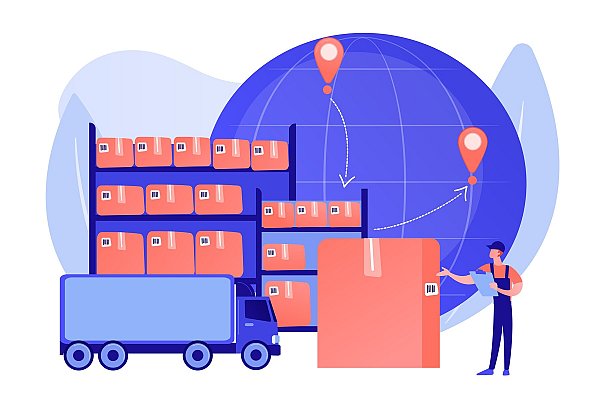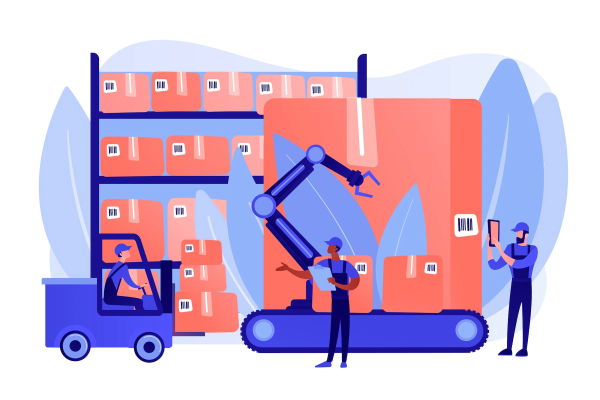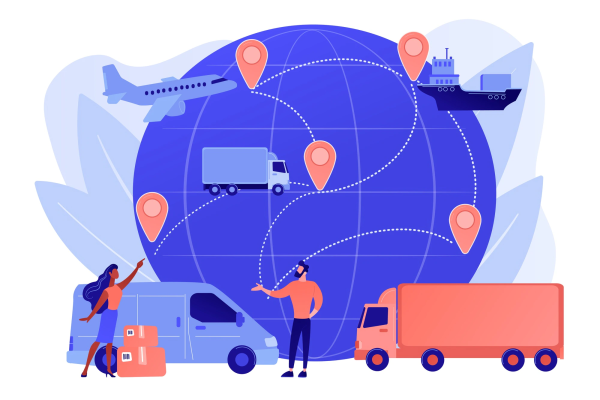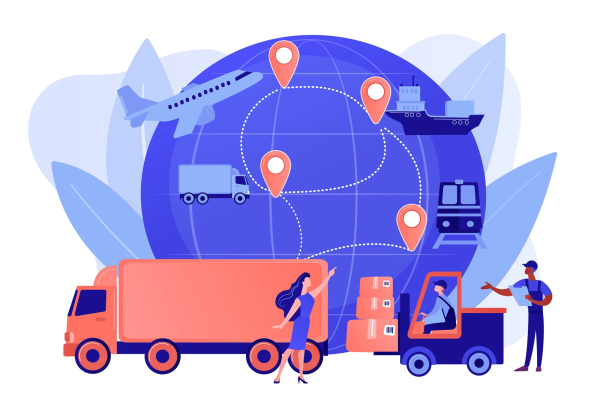Before e-commerce, retailers typically stored all units of a particular item in a single location from which they picked pallet quantities.
Today, thanks to Cuborio®, in order to fulfil both e-commerce and physical orders, warehouse staff must be able to pick items from the pallet, crate or individual item, which means that more distinct storage locations are needed for each item to keep the warehouse organised.
In addition to storage, processing direct-to-consumer orders also takes more time. Shipping a pallet to a retailer can be a distinct workflow, while shipping a pallet of individual items requires many other distinct activities.
Contact us for a free consultation

Inventory control and management
With Cuborio®, accurate inventory data has become essential and does not require special attention to ensure that customers receive the correct item. Thanks to our integrated logistics system, the margin of error that exists between warehouse and retailer does not apply to online customers.
Product profiling is crucial when preparing your warehouse for e-commerce, and acquiring product measurements and sizing online are new challenges for the warehouse.
Contact us for a free consultationWarehouse management and information systems
Many warehouses lack adequate visibility tools and information system support (WMS), making the management of split order fulfilment more difficult than necessary.
With Cuborio®, when you prioritise online customers, expedited orders will no longer put a strain on warehouse operations.
Contact us for a free consultation

Reverse logistics management
High return rates are common among retailers. In some cases, returns can reach up to 22%. Returns management is a complicated process that every retailer must handle alongside its main storage and distribution operations, often within the same facilities and at great expense.
When unforeseen circumstances arise, product recalls put a strain on supply chains, consuming significant resources and storage space. Each return represents value and must be stored accordingly until it has been checked, destroyed or processed for resale, returned to the supplier or otherwise handled in accordance with the respective retailers' return policies.
Contact us for a free consultationCuborio® has succeeded in minimising reverse logistics management.
Multi-channel approach to warehouse management
When our IT engineers designed Cuborio®, they focused on the following aspects in the section dedicated to warehousing:
Transition strategy: evaluates your current operations to develop a short-, medium- and long-term action plan to prepare your warehouse to handle the challenges of the online channel, avoiding a 'big bang' implementation and ensuring an effective transition solution.
Contact us for a free consultation

Designing a customised storage solution: recognising the need for more space, some companies are building additional warehouse facilities to accommodate direct-to-consumer distribution. With Cuborio's multi-channel approach, companies can ship directly to consumers while taking future trends into account. To be ready for change, it is important not only to have facilities capable of accommodating different types of fulfilment, but also to implement technologies and infrastructure that can adapt.
A new information system: B2C (business-to-consumer) order fulfilment requires additional functionality in terms of new interfaces and new operational functions, which go beyond a standard WMS. The new requirements developed by Cuborio® for e-commerce may include, in addition to a customer delivery address, endless special customer requests, such as gift wrapping, engravings and documents that must accompany the product. With Cuborio®, delivery orders can be generated that can be integrated with the transport contractor's system and provide accurate information while supporting traceability.
Contact us for a free consultationNew forms of automation: Automation typically requires a manufacturing mindset, ensuring that leaders and the workforce understand the automation solution and are trained to use it. With Cuborio®, the process of involving operational teams as early as possible, identifying knowledge gaps and recruiting where necessary is easy and intuitive. Every person plays an important role in preparing for e-commerce and managing the warehouse
E-retailing is clearly a growing and important world of business. For companies to succeed in the new market, they must take a new approach to warehouse and logistics design and operations to cost-effectively meet the more demanding requirements of the electronic order fulfilment process.

Cuborio® supports you with suppliers and couriers, do you want to know more?
Contact us